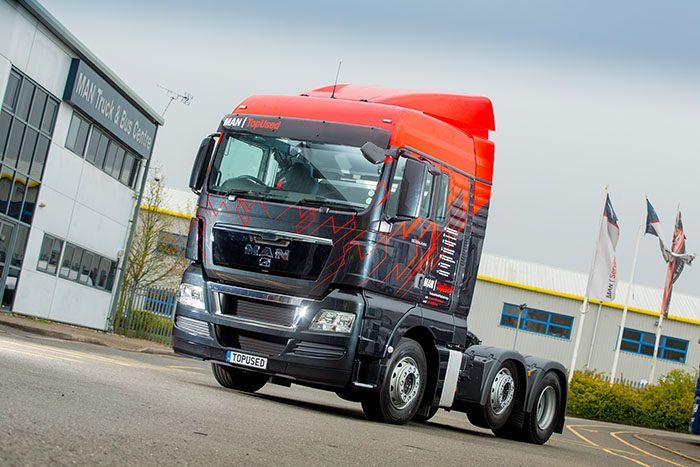Servitization: how MAN transformed the truck market
Jul 27, 2015 • Features • CHange Management • disruptive technology • Servitization • truck servicing
Servitization in some sectors and for some companies is driven by market forces, not customer demand. In this exclusive interview with Field Service News, Des Evans, former Managing Director of MAN Truck and Bus UK and now Honorary business professor at Aston University Business School, explains how the truck manufacturer transformed its business from a sales-led organisation to one focused on customer service.
As we begin to hear more and more about servitization, often it is the same company names being held up as core examples of adopting this approach. What is interesting is that these companies often tend to be in very disparate industries, but what they all have in common is that they have been able to harness technology to allow themselves to become a disruptive influence within their sector.
For some companies - Rolls Royce, for example - the move to an advanced services model has been client driven. For other companies such as truck manufacturer MAN Truck and Bus UK, however, the need to evolve has been very much market driven, as Des Evans explains.
“Over the past forty years truck volumes have almost halved, so you have to run a lot faster to stand still,” Evans begins “If you are not going to sell more vehicles, or gain more market share (which is expensive) then you have to divert your energies into service operations and into your installed customer base.”
“That was the real focus for us to develop the service business: talking to the installed base that was already in the market,” he continues.
MAN not only transformed their own company considerably, they also transformed the market for ever. Only now are some of their competitors beginning to catch up.
However, being a pioneer involves radical thinking and such thinking really needs to be driven from the top if it is to prove a success. For MAN, fortunately, it was an approach all of the senior executive team believed in.
“I think the organisation was a far more collegiate organisation than most and everything was very much a team effort,” Evans explains. “We had to focus on how we could not only sustain the business model but actually to maintain it. When faced with market volumes halving, whilst it is not exactly a burning bridge, we also knew we had to do something different. When we introduced the new truck model it was the trigger really to introduce the new business model as well.”
As is always the case with disruptive change, technology and fresh thinking walked hand-in-hand in the initial transition.
“The catalyst was the Trucknology generation which introduced electronic, digital vehicles as opposed to analogue, mechanical vehicles. It gave us the opportunity to present a completely new business case to the operator by including three years servicing as standard, not something you charge for. However, it required a completely different service organisation to deliver that and a completely different sales force.”
“The challenge was interesting. It did help us move our market share from 8% to 12%, albeit in a smaller market, but that was what we had to do. We had to increase volume, not necessarily by price cut but by some added-value service.”
Still, despite the new strategy being born out of necessity, it was still reliant on the technology, although the wider picture was also reliant on the culture within an organisation.
You had to get buy-in from all stakeholders.”
Yet despite the approach being both complex and ground breaking at the time, the premise at the heart of everything was in fact incredibly simple, it seems. “The main message for the customer both internally and externally was we were going to improve the profitability of the customer,” Evans explains. “Because we saw first hand that not only was the truck market itself going down but also the profitability of the operators was going down too. Simply, we could no longer afford to sell to a customer base that couldn’t afford to buy our products or services.”
“It was a case of trying to make your customers more profitable, and by doing so you could secure our future business,” Evans concludes.
Whatever the business driver, what MAN Truck and Bus UK has achieved in recent years has been both impressive and intelligent. They have revolutionised their industry and put service back at the heart it.





















 Field Service News is published by 1927 Media Ltd, an independent publisher whose sole focus is on the field service sector. As such our entire resources are focused on helping drive the field service sector forwards and aiming to best serve our industry through honest, incisive and innovative media coverage of the global field service sector.
Field Service News is published by 1927 Media Ltd, an independent publisher whose sole focus is on the field service sector. As such our entire resources are focused on helping drive the field service sector forwards and aiming to best serve our industry through honest, incisive and innovative media coverage of the global field service sector.
Leave a Reply